In the Berlin DRIVE. Volkswagen Group Forum it’s all about deviations from the norm. ERROR – THE ART OF IMPERFECTION is a joint exhibition project of Ars Electronica and Volkswagen AG.
Type: Exhibition
Duration: November 17th, 2018 – March 3rd, 2019
City, Country: Berlin, Germany
Venue: DRIVE. Volkswagen Group Forum
In and of itself, an error is neither good nor bad. First of all, for us an error is “merely” a deviation from what we expect. And this is exactly where the artists in our exhibition come into play: they are the ones who often purposely challenge deviations and/or errors. What does it mean, if we’re no longer able to recognize the deviation at all? If we just can’t understand any more that this is an error which we could tolerate or not? To what extent can this error be checked at all in the digital world? But aren’t we the ones who ultimately determine the order, rules, values and standards of a society and culture? Proceeding from these central questions, four guiding principles started to crystallize, which will be further illuminated in the context of an error: irritation, order, value and control.
IRRITATION
All of us recognize the situation: at the very moment when what was supposed to appear failed to do so, astonishment, disappointment, and perplexity prevail. On closer inspection however, we might discern an opportunity. The key is to look precisely, so as not to be deceived by what we see at first glance.
“Just because something doesn’t do what you planned it to do doesn’t mean it’s useless.”
Thomas A. Edison
Emanuel Gollob (AT)
Robot, Doing Nothing
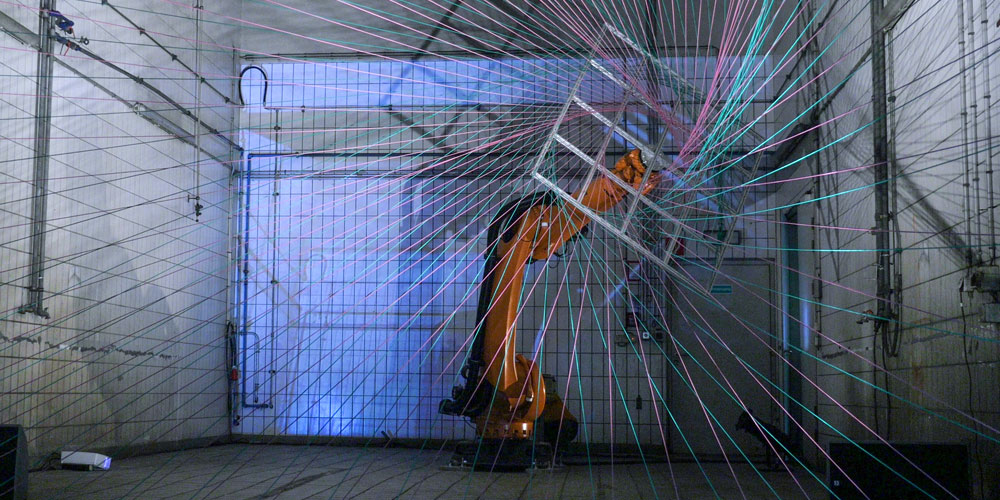
How would a society look in which you are rewarded for doing nothing? This robotic installation invites you to let your mind wander freely in a state of inactivity while watching the constant changes in its geometric string pattern. The installation is as much a critique of the extreme busyness of modern society, in which we are permanently present and ready to communicate, as it is a postindustrial future scenario in which robots are part of our daily lives.
In Collaboration with Johannes Braumann AT (University of Art and Design Linz, Creative Robotics), Supported by KUKA CEE GmbH / Austria
www.emanuelgollob.com
Attila Csörgő (HU)
Clock Work
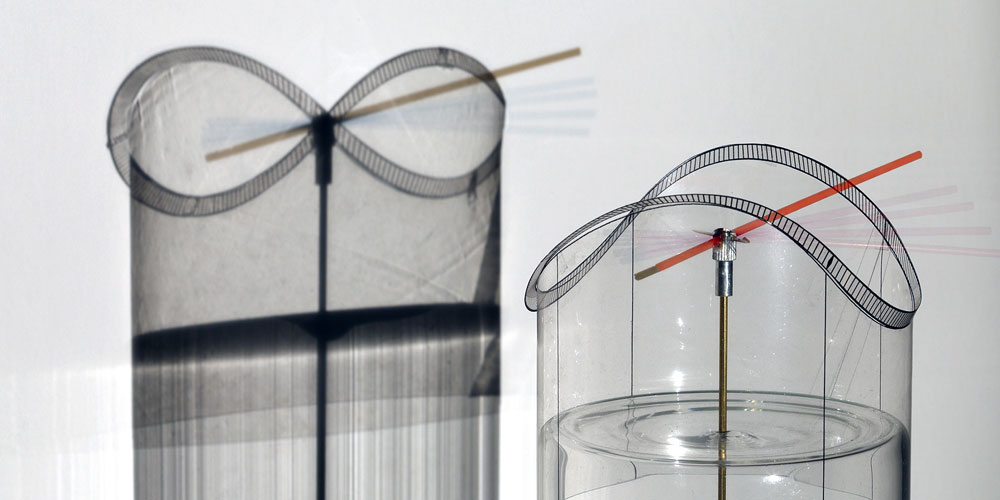
Time is relative, appearing infinite, linear or circular depending on the situation. Clock Work is a light object that plays with our notion of time by constantly changing its form. In space, it appears as a curve, reinforced by a one-sided Möbius strip, while its shadow looks like an infinity sign. The second hand of a mechanical clock moves along the strip, with an irregular pace, changes of direction and pulsating radial extension, showing a different kind of motion.
www.artsy.net/artist/attila-csorgo
Attila Csörgő (HU)
Occurrence Graph
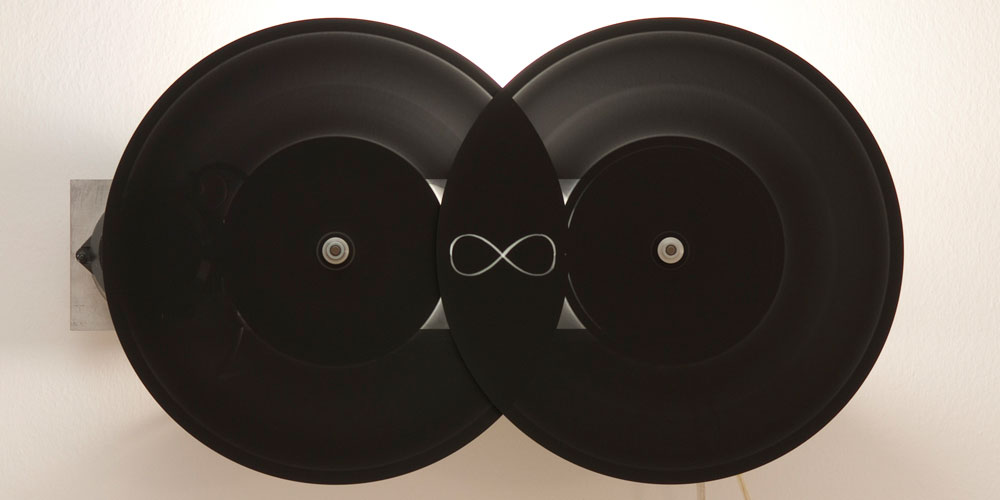
In Occurence Graph (an event diagram) the artist also plays with the theme of time, where personal perceptions face purely measurable facts. In keeping with the theme of deception, this kinetic wall object has two states of appearance. When the panes stand still, a seemingly disordered pattern is visible. Only when they are set in motion does turning reveal the double nature of the objects.
www.artsy.net/artist/attila-csorgo
Georgie Pinn (AU/UK)
Echo

Echo is a bridge to another person’s memory, identity and intimate experience. The key intention of the work is to generate empathy and connect strangers through an exchange of facial identity and storytelling. Seated inside a graffitied photo booth and guided by an AI character, you slowly see another’s face morph into your own, driving your features with their expression. When you record your own story, layers of yourself are echoed in the other. What story will you share with a stranger?
Creative Producer: Kendyl Rossi (AU/CA)
www.electric-puppet.com.au
ORDER
An error can only arise in the first place where a principle of order and a rule-based structure are in effect. Rules are important for us to be able to find our way as people. Rules give us and promise us orientation, safety and familiarity. Rules are also necessary in the scientific realm, because it is concerned with comprehensibility, reproducibility and control. Creative approaches demonstrate, however, that rules are also there to be broken so as to create a place for the new.
“There are no rules here – we’re trying to accomplish something.”
Thomas A. Edison
Stefan Tiefengraber (AT)
DSD-08AS

DSD-08AS is a kinetic sound installation, consisting of multiple modules with two solenoids (electromagnets), a metal rail and a metal ball. Each is a self-triggering system where the oscillating metal ball functions as a conductor between the rail and the solenoids. The resulting rhythms are ever-changing, depending on mechanical inaccuracy, friction of the moving balls, the characteristics of the wall, the size of the space and your position, until the cycle reaches its end and the space becomes silent.
www.stefantiefengraber.com
Prokop Bartoníček (CZ), Benjamin Maus (DE)
Jller

Jller is part of a research project on industrial automation and historical geology. The apparatus sorts pebbles from the German river Jller by their geologic age. The river carries pebbles that are the result of erosions in the Alps, and those from deeper rock layers once covered by glaciers. The machine uses computer vision to sort the stones by colors, lines, layers, grain and surface texture, and classifying them into age categories using a manually trained algorithm.
www.prokopbartonicek.com
www.allesblinkt.com
So Kanno (JP), Yang02 (JP)
Asemic Languages

Characters are a means of communication and records of languages, and the culture and history of their speakers. In this project, a robot was shown ten handwritings, each using a different sign system. Based on this, it invents new characters that look as if they meant something important, but in reality are purely aesthetic. While we tend to attribute almost magic powers to robots, this work shows in an impressive way that in the end they only “know” what they have been taught.
Machine Learning Programming: Hironori Sakamoto (JP)
kanno.so
yang02.com
Waltz Binaire (DE)
Narciss

The human ability of self-perception and our urge to question, research, pray and design have long been unique in the world. But is this still true in the digital age? Narciss is the first digital object that reflects upon its own existence by exploring its physical body with a camera. An AI Algorithm translates the observations into lyrical guesses about who it thinks it is. The algorithm simulates human cognition from a behavioural perspective. The resulting rapprochement of man and machine questions our self-image and our raison d‘être.
waltzbinaire.com
VALUE
Failures and errors are often the source of later celebrated inventions, which promote the new and with it, progress. But who defines what a positive incorrectness is, and what is a negative inaccuracy? And is there any way to predict this?
“Negative results are just what I want. They’re just as valuable to me as positive results. I can never find the thing that does the job best until I find the ones that don’t.”
Thomas A. Edison
LarbitsSisters (BE)
BitSoil Popup Tax & Hack Campaign
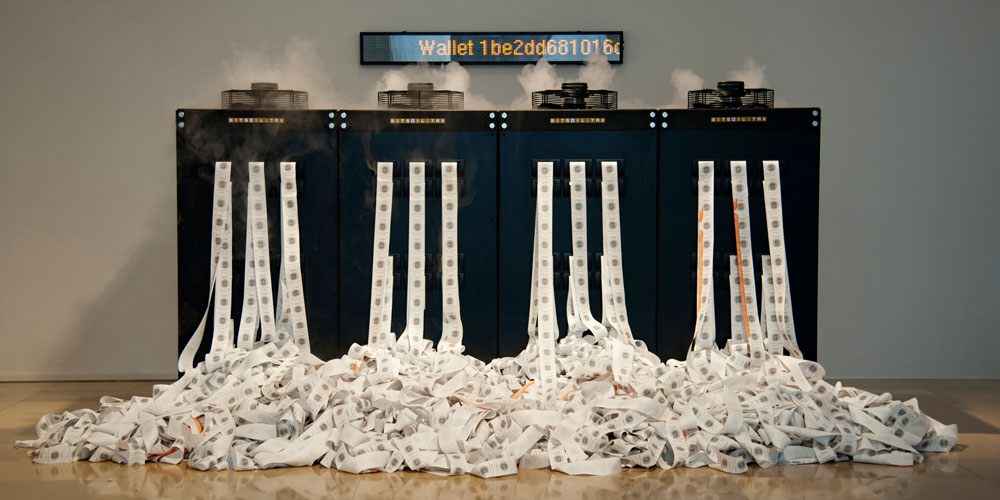
While using free internet services, we generate data that big corporations use to earn a lot of money. This installation proposes a new way of distributing internet wealth by introducing the BitSoil currency. Twitter bots invite users to join the campaign by launching their own bots which send digital postcards to either a tech company CEO or a head of state. Through these interactions, new BitSoil value is created – printed receipts allow us to follow this process on-site.
www.larbitslab.be
Anna Ridler (UK)
Mosaic Virus

Mosaic is the name of the tulip virus responsible for the coveted petal stripes that caused the speculative prices during the ”tulip mania” in the 1630s. This work draws a parallel to the current speculations around cryptocurrencies, showing blooming tulips whose stripes reflect the value of the Bitcoin currency. Echoing how historical still lifes were painted from imagined bouquets rather than real ones, here an Artificial Intelligence constructs an image of how it imagines a tulip looks like.
This work has been commissioned by Impakt within the framework of EMAP/EMARE, co-funded by Creative Europe.
annaridler.com
Anna Ridler (UK)
Myriad (Tulips)
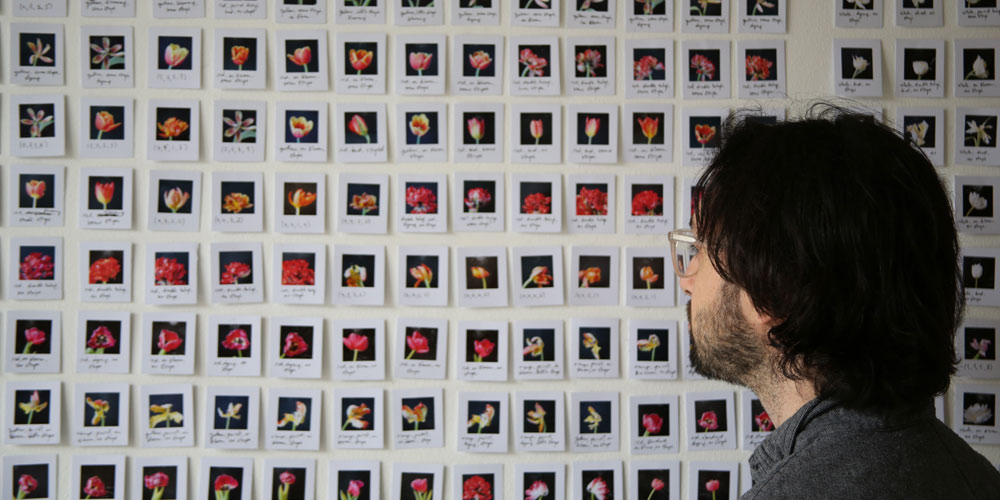
This work is the training data set for the parallel work Mosaic Virus. Ten thousand, or a myriad, tulips were photographed and sorted by hand by the artist according to criteria of color, type and stripe — a work that is the basis of any database for machine learning. The images reveal the human aspect that sits behind machine learning and how the labels are often ambiguous. How objective can artificial intelligence actually be when it is repeating the decisions made by people? And how difficult is it to classify something as complex as gender or identity when it is hard to categorise a white from a light pink tulip?
This work has been commissioned by Impakt within the framework of EMAP/EMARE, co-funded by Creative Europe.
annaridler.com
César Escudero Andaluz (ES), Martín Nadal (ES)
BitterCoin – the worst miner ever

BitterCoin is an old calculator hacked into a miner that validates pending Bitcoin transactions in the blockchain. In the last years, computing power has become the most important variable in the cryptocurrency competition. The owner of the most powerful technology is the only benefiter. BitterCoin takes up this discourse in a rhetorical way — it works as the most basic computer, increasing the time needed to produce Bitcoins to almost an eternity.
escuderoandaluz.com
martinnadal.eu
CONTROL
Control is any option for action that we as people have to use as a responsible part of a society. Our capacity for the future depends on whether we first demand access to the errors, in order to be able to decide, secondly, whether we will be able to tolerate the deviations that arose from them, and use them for our further development. Thirdly, we have to be able to defend ourselves against any deviations and errors that go too far for us and lie outside of our tolerance limit.
“When you have exhausted all possibilities, remember this – you haven’t.”
Thomas A. Edison
Mushon Zer-Aviv (IL), Dan Stavy (IL), Eran Weissenstern (IL)
The Normalizing Machine

Early scientific methods to standardize, index and categorize human faces were adopted by the Eugenics movement as well as the Nazis to criminalize certain face types. Alan Turing, considered the founder of computer science, hoped that algorithms would transcend this systemic bias by categorizing objectively, and end the criminalization of deviations like his own homosexuality. But how do algorithms identify a “normal“ face? And how do we?
mushon.com
stavdan.com
eranws.github.io
Adam Harvey (US)
VFRAME – Visual Forensics and Advanced Metadata Extraction
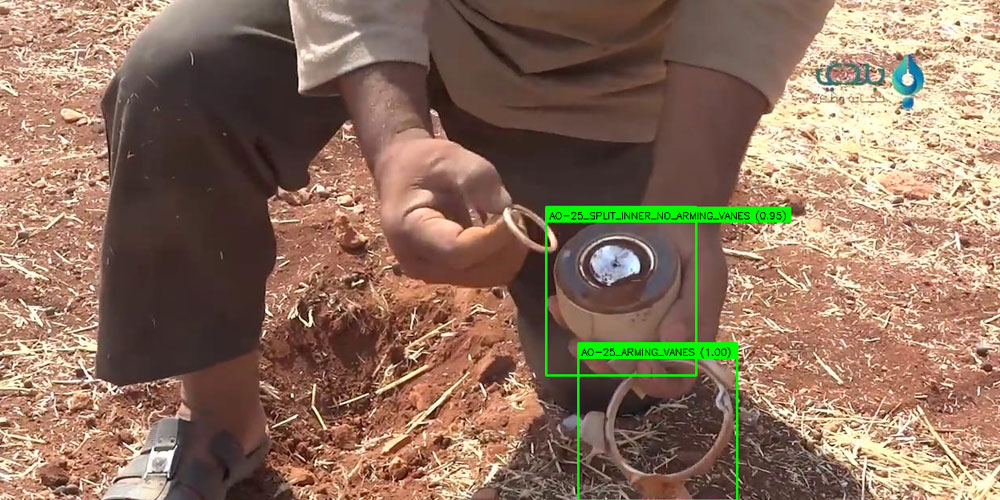
VFRAME is an open source computer vision toolkit designed for human rights researchers and journalists. VFRAME is currently working with the Syrian Archive, an organization dedicated to documenting war crimes and human rights abuses, to build AI that can automatically detect illegal munitions in videos. Their current research explores the use of 3D modeling and physical fabrication to create new image training datasets.
ahprojects.com
Robertina Šebjanič (SI), Gjino Šutić (HR)
aqua_forensic – underwater interception of biotweaking in aquatocene

How do the oceans feel human impact? This installation illuminates invisible anthropogenic, pharmaceutical pollutants in samples from the Danube (Linz AT) and the Adriatic Sea (Dubrovnik HR). In in-vitro experiments, delicate microorganisms react to painkillers, hormone pills, antimycotics and psychotropics, showing how these products that we use on a daily basis influence life and behavior in the whole loop of interconnected ecosystems.
This work has been commissioned by Ars Electronica Linz within the framework of EMAP/EMARE, co-funded by Creative Europe, supported by Projekt Atol Institute SI, UR Institute HR, Čistoća Dubrovnik, The Ministry of Culture of the R. of Slovenia and The Ministry of Culture of the R. of Croatia
robertina.net
biotweaking.com
Claudia Rohrmoser (AT), Florian Kühnle (DE)
DIN

The light installation DIN does standardization work. Thirty LED panels are in a state of uncertainty and repeatedly trigger major signal errors in the room’s media system. In the process of self-regulation, all digital displays go through one calibration ritual after the other without ever reaching an ideal state. It is about the constant attempt to optimize leads to a new ‘normal’ that includes the error.
Creative Direction: Claudia Rohrmoser; Art Direction: Florian Kühnle; Sound Scenography: TAUCHER Sound Environments, Till Seigfried, Johannes Scherzer; Motion Design und Realisation: studio.moto, Marcel Schobel, Cynthia-ël Hasbani, Nicola Minssen, Yannick Sengstock, Philipp Hartmann. Supported by mbox Bewegtbild GmbH, UE University of Applied Sciences Europe / Art & Design.
rohrmoser.tv
www.larifon.de
When he was a mere 21 years old, Thomas Alva Edison (1847–1931) demonstrated a machine by which votes could be counted more easily. His electrically operated vote-counter however had no success, and was rejected by the relevant congressional committee in Washington. At the age of 30, he achieved a breakthrough with the invention of the phonograph, a voice recorder. During his life he registered 1091 patents, was a creative spirit and a clever businessman, and to this day is erroneously celebrated as the inventor of the lightbulb, even though he “merely” perfected it and made it competitive.
Curated by Manuela Naveau
Exhibition- and Communication Design: Letitia Lehner – MOOI Design
Production Team: Nani Cooper, Benjamin Dewor, Stefan Feichter, Alexander Hinterlassnig, Jens Jech, Karoline Kreißl, Julia Nüsslein, Gustavo Valera;
